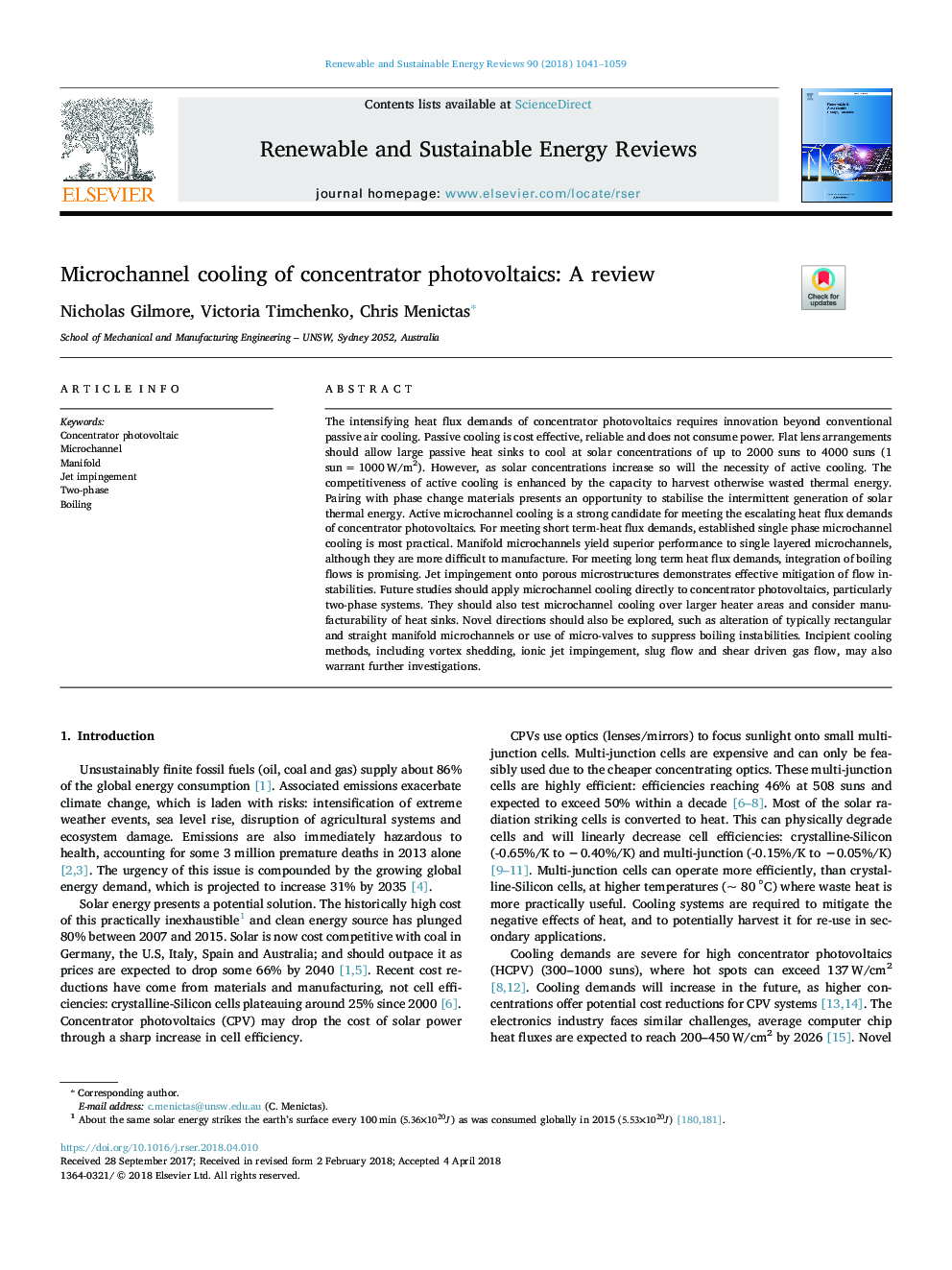| Article ID | Journal | Published Year | Pages | File Type |
|---|---|---|---|---|
| 8111502 | Renewable and Sustainable Energy Reviews | 2018 | 19 Pages |
Abstract
The intensifying heat flux demands of concentrator photovoltaics requires innovation beyond conventional passive air cooling. Passive cooling is cost effective, reliable and does not consume power. Flat lens arrangements should allow large passive heat sinks to cool at solar concentrations of up to 2000 suns to 4000 suns (1 sunâ¯=â¯1000â¯W/m2). However, as solar concentrations increase so will the necessity of active cooling. The competitiveness of active cooling is enhanced by the capacity to harvest otherwise wasted thermal energy. Pairing with phase change materials presents an opportunity to stabilise the intermittent generation of solar thermal energy. Active microchannel cooling is a strong candidate for meeting the escalating heat flux demands of concentrator photovoltaics. For meeting short term-heat flux demands, established single phase microchannel cooling is most practical. Manifold microchannels yield superior performance to single layered microchannels, although they are more difficult to manufacture. For meeting long term heat flux demands, integration of boiling flows is promising. Jet impingement onto porous microstructures demonstrates effective mitigation of flow instabilities. Future studies should apply microchannel cooling directly to concentrator photovoltaics, particularly two-phase systems. They should also test microchannel cooling over larger heater areas and consider manufacturability of heat sinks. Novel directions should also be explored, such as alteration of typically rectangular and straight manifold microchannels or use of micro-valves to suppress boiling instabilities. Incipient cooling methods, including vortex shedding, ionic jet impingement, slug flow and shear driven gas flow, may also warrant further investigations.
Related Topics
Physical Sciences and Engineering
Energy
Renewable Energy, Sustainability and the Environment
Authors
Nicholas Gilmore, Victoria Timchenko, Chris Menictas,
